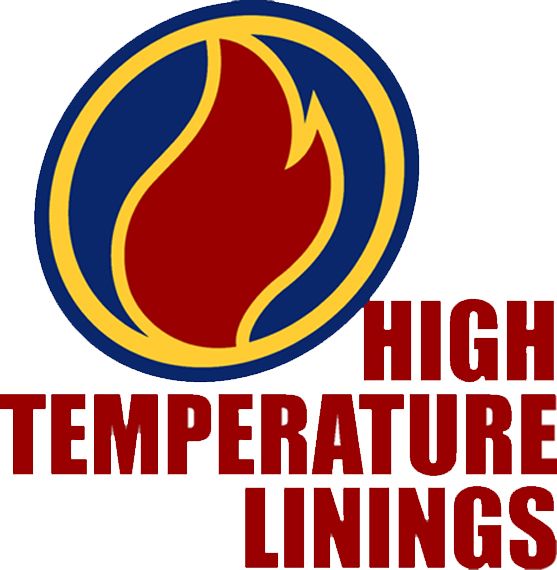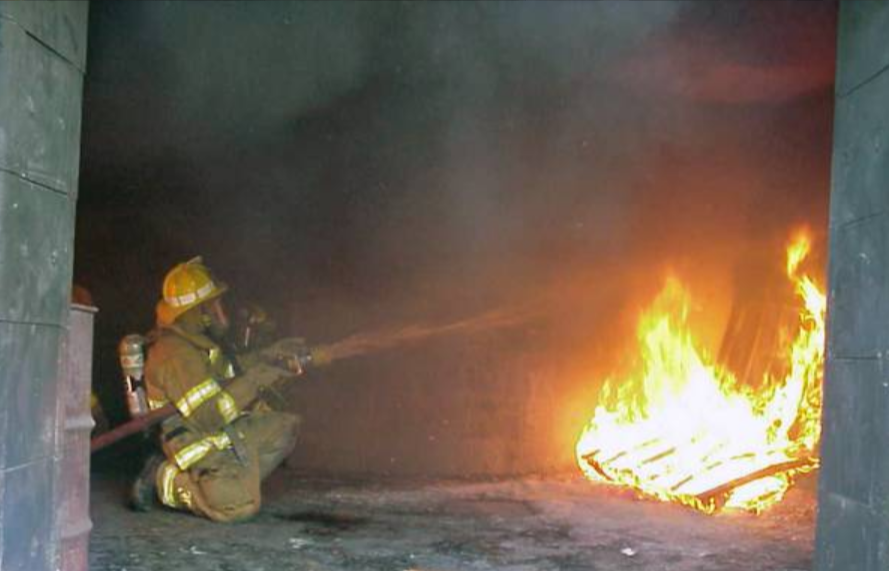
Serious Burn room lining for serious training




PDF Downloads
Why is a Structural Survey Worth the Money?
Why does HTL provide certain pre construction services for free?
Burn Rooms Standard Operating Procedures
Burn pod for observational training
HTL project references by name – Contact us for list
Advantages-Disadvantages of Thermal Linings Available Today
Load Bearing Walls vs. Column Support
Sequence of Construction for a Column Supported Burn Building
Sequence of Construction for a Load Bearing Walls Burn Building
Description of a Basic Burn Building
Resources / Links:
International Association of Fire Chiefs
National Volunteer Fire Council
National Fire Protection Association
International Society of Fire Service Instructors organization (isfsi.org)
-----> HTL encourages you to visit this site as their mission and goals are aligned with ours. The mission statement of ISFSI reads: to contribute to the fire service through the education and support of fire service instructors everywhere. Its goal is to lead fire and EMS instructors in their efforts to reduce firefighter fatalities & injuries, increase firefighter safety, and improve the profession through education and training. ISFSI supports instructors through educational opportunities, networking, mentoring programs, leadership opportunities, instructional resources, and legislative representation. The ISFSI is your opportunity to become involved as a training developer, instructor and writer. ISFSI offers a training program to develop instructor skills for conducting NFPA 1403 compliant live fire evolutions. HTL encourages you to consider this excellent program.
BLOG POSTS
-
Basic Live Fire Training Structure Details
DESCRIPTION: Properly designed live fire training structures offer a logical balance between initial construction cost and long-term maintenance expense, while providing the safest live fire training environment possible. This is achieved by minimizing the structural elements exposed to fire, thereby minimizing expensive thermal lining systems required to protect those structural elements. A simple structural concrete frame is used. Ceilings and columns are protected with System 203. All of the walls are non-structural concrete block that does not require protection. Those walls are designed to be maintained and/or replaced as needed over time. This approach renders an affordable burn building in which fires can be conducted throughout the structure. Many of these structures have more than ten burn rooms while costing only $500,000 to $1,000,000. Maintenance is reasonable, and rooms can be reconfigured without structural concern. Every structure is configured to meet your specific training objectives. These training props, protected with System 203, offer decades of service.
WHY USE NON-LOAD-BEARING / NON-STRUCTURAL CONCRETE MASONRY PARTITIONS?
Non load-bearing, sacrificial concrete block walls are much less expensive to build than load-bearing structural walls which are protected with expensive linings.
Unlined sacrificial concrete block walls absorb and dissipate heat. They do not become overheated as quickly as fully lined rooms.
Sacrificial walls can be demolished, replaced or relocated with relative ease without concern for structural integrity.
Sacrificial walls are relatively cheap and easy to maintain. Typically, only those walls that are closest to the burn pads require periodic maintenance. Maintenance of a block wall is much cheaper than the initial and/or replacement cost of the lighter duty liners which fail more quickly than block walls, and which are multiple times more expensive to purchase.
WHAT WILL IT COST?
The cost for any structure will vary relative to your locality. Further, dependent upon jurisdictional procurement rules, government mandated “prevailing wages” (typically union scales) can add as much as 20%-25% to the cost of the structure. A typical Class A live fire training structure will range $500,000 – $1,000,000. There are cheaper ways to go, but we believe the approach described herein offers the best return as measured by dollars and/or training objectives.
TIME
Structures are typically designed and constructed in about nine months, Of course, time is dependent upon site work, complexity and weather.
OPTIONS
Options are unlimited. We have twenty years of experience, and have worked on hundreds of live fire training structures. Let our experience open your eyes to all the possibilities available to you. Stair towers, balconies, rappelling systems, attics, ventilation props, gas fired simulators and dozens of other great ideas – many of which we steal from you, the firefighter, who is always innovating new ways to train.
PERMANENTLY SITED LIVE FIRE TRAINING STRUCTURES
Having resolved many issues associated with permanently sited live fire training structures, our references will attest we have made major contributions to live fire training structure design and technology over the years, finally resulting in live fire training structures supporting firefighter training objectives to provide the best, safest training possible.
-
New VS Refurbished Burn Building
High Temperature Linings would like to offer some basic advice regarding your use of your new or refurbished burn building. Keep in mind that we are not fire training officers. We are not even firefighters. However, we have been assisting fire training divisions in designing, protecting and repairing live fire training structures for over fifteen years, and have completed work on nearly two hundred training structures. Further, Bill Glover, President of our company, has served on the NFPA Technical Training Committee on Fire Service Training since 2002. We believe our experience offers a unique insight into the use of the facilities that we protect and compels us to make the suggestions. We will start posting our findings often on this blog.
-
Saftey Issues
Is your burn building safe? How do you know?
How effective is your training?
Is your training structure protected by a sacrificial thermal lining system?
Shown below are pictures of failed linings, and damaged structures. Once a lining fails, training structures are vulnerable to damage. Many linings are unable to handle the extreme thermal shock, and expansion and contraction that occurs in burn rooms.
When a material is heated or cooled to extreme temperatures, and then suddenly subjected to oppositely extreme temperatures (water) the material reacts by expanding and contracting. Ultimately, the material may not allow it to adjust so quickly causing expansion cracks, spalling, and crazing.
Structural damage can occur behind failed insulation boards.
We cannot overemphasize the importance of the structural integrity of the training structure. Failing structures are a serious threat to the health and welfare of training personnel. Associated risks can be addressed and eliminated.
--->Examples
--->Examples
-
Structural Surveys
Most existing burn buildings are damaged. A few are so unsafe they need to be condemned
Such damage threatensstructural integrity of the building as well as the safety of those firefighters training inside.
Can you tell when you have a significant problem? Many fire department personnel cannot.
As your community grows, do you know if you can upgrade your burn building to meet the additional demand for training needs? An experienced structural engineer can provide you with the answers to these and other questions by evaluating your burn building.
NFPA 1403 requires periodic engineering surveys on all burn buildings. Surveys will keep you in conformance with this standard, reduce your liability, and help you maintain a safer training environment. The information provided by the survey will allow educated decisions to be made regarding safety, repairs and structure life. These important considerations should be addressed before investing in linings, temperature monitoring systems and upgrades to doors, windows, etc. To provide you with adequate information to enable you to make these decisions, we can recommend what professional services you will require.
HTL can do a preliminary “safety check” of your existing burn building and assist in obtaining the services of an experienced professional engineer to complete the structural survey.
Get the Facts. Research a thermal lining system suitable for your live fire training requirements which will protect your building.
Consider long term life cycle cost analysis: replacement/maintenance/training downtime factors including costs of out of area live fire training.
-
Sacrificial Walls
Owners and designers frequently have a hard time understanding and appreciating the benefits of using sacrificial construction in burn buildings.
There are a number of critical advantages:
A fire training prop that includes a structural frame, protected with a thermal lining, and non-load-bearing, unprotected sacrificial walls, is much less expensive to construct than a typical wall bearing structure which frequently requires a much greater quantity of expensive lining systems to protect the large structural wall surfaces.
Sacrificial concrete block walls help to absorb and dissipate heat in burn rooms. Consequently, the rooms do not become overheated as quickly as do fully lined rooms.
Sacrificial walls can be demolished and/or relocated with relative ease, and without concern to the structural integrity of the building.
Sacrificial walls are relatively cheap and easy to maintain. Usually, most of these walls do not require replacement. Only those portions of the walls that are closest to the burn pads require periodic replacement. Remember, an 8″ concrete block, installed, typically costs less than $10/s.f. Thermal linings are much more expensive ($30 to $70/s.f), and some of them require replacement just as frequently, if not more frequently than the sacrificial block.
Design details associated with allowances for expansion and contraction are an even greater challenge when working with load bearing walls.
Using burn racks is an important consideration as they pick the heat up off the floor; they define a fuel load; and they move the fires away from the walls. All of these things help to protect the live fire training structure as well as your personnel.
There are a number of tricks to making this design scheme work, so please do not hesitate to contact us for more information.
-
System 203 in 15 Years
HTL has installed over 400,000 units of System 203 over 15 years.
The County of Fairfax Fire Training Academy (Virginia), (pictured on right), installed their lining during March 1994.
As you can see, the lining system has not been damaged after 15 years of training, as opposed to exposed boards that often fail relatively quickly (on left).
-
Questions For Our Competition
Every time we meet prospective customers, we’re surprised to hear how much limited information our competitors have offered them. When we started as a company, a primary principle was to provide as much information as possible regarding issues with burn buildings and the extreme environments created during live fire training.
We have compiled 10 important questions to ask the companies manufacturing protective linings before making a decision that will affect the lives of your training personnel. We have also provided answers to our own questions. What will the competitors answer?
1. How hot can I burn with your lining systems
System 203 can handle all temperatures achieved with Class “A” fuels. However, we strongly recommend the establishment of standard operating procedures that are based upon your testing and experience with each burn room. Know the limitations of your personal protective equipment, given the repetitive exposures associated with a day of live fire training. Understand that the same room gets hotter with each evolution.
2. How often will I have to replace the lining system, and why?
We have installed over half a million units with only a few hundred replaced in twenty years! These units have been replaced at our discretion and at our cost. System 203 does the work, so you don’t have to.
3. How does extreme thermal shock affect the lining system?
System 203 offers a barrier of refractory concrete fire tiles that protect a layer of high temperature insulation. The tiles are 12” x 12” x 2” thick and are interlocked with one another. As extreme temperatures fluctuate, the tiles float, expanding and contracting in the “shiplap” joint between the tiles. This unique barrier withstands the affects of thermal shock while protecting the layer of insulation that protects the structure from heat.
4. How do you ensure structural integrity of the training structure during live fire training?
The beauty is that there is no need to replace anything. Other systems may require frequent maintenance. If the maintenance is not performed, the structural integrity of the building may be compromised. See pictures of damage.
5. What percentage of your annual sales are from selling replacement panels for previous installations?
Our competitors offer convenient material replacement forms on their website, to ease your pain in ordering replacement panels! HTL does not generate income from replacing System 203. Of course, once they see how well our systems perform over the years, many of our customers come back to install our systems in additional areas throughout their structures.
6. How is your system engineered to absorb a blow from a tossed pallet or BA Equipment, or the force of smooth bore hose streams?
Our system is anchored directly to the civil structure, allowing the system to absorb the blow and transfer the force to the structure. Again, 2” of refractory concrete is protecting the insulation barrier, offering an extremely durable lining system. The competition often installs 1” boards on channels, leaving an air space behind the panel. That panel then becomes a structural panel trying to transfer the force of a blow to the channels. Insulation boards often cannot transfer the forces; so they simply crack.
7. Do you measure, monitor and record temperatures that the burn building sees behind the lining?
We can install an advanced temperature monitoring system to monitor and record the temperatures during training sessions. The temperature monitoring recorder, housed away from burn rooms, is an invaluable tool. Data can be retrieved from the recorder or transferred to a personal computer.
8. Do you place every single one of your projects on your reference list? If not, why not?
From the very beginning, every single one of our references complete with names and phone numbers was placed on our website; see HTL Projects. We are proud of every reference, and have absolutely nothing to hide. Our customers are willing to share their personal experiences working with us.
9. Have you ever tested your system, side by side with System 203, to compare performance and life span?
We would welcome and accommodate such testing with any system on the market.
10. How much are the maintenance and usage costs?
The competitions’ charge for the replacement panels alone (without supporting steel channels, insulation battens, anchors, and chemicals), is nearly as much, and in some cases more, than our charges for the materials for our entire system. There are minimal maintenance costs for our systems. Typically, annual material costs are less than $50 per year, and one person can perform the maintenance in a few hours every three or four months
-
Take Into Consideration
It begins with the need for firefighters. Today’s firefighters wear many hats. Hats for rescue, extrication, emergency medical care, hazardous materials technician, and life safety inspector, just to name a few. Wearing all these hats, the firefighter provides an effective, cost efficient service to the public. Keeping this efficiency, and keeping firefighters at peak performance is the goal of training, and 3-D live fire burn buildings are a vital part of such training. Take time to consider all of your available options by taking these points into consideration. Turn this vital training aid into a long-term asset with proper care and attention.
Take time to research. Take advantage of the time to explore all the avenues and ideas.
Ensure you know what temperature the structure is seeing at all times.
Be familiar with the guidelines of NFPA 1402 and 1403.
Get a professional engineer with burn building experience to survey your structure.
Think about preventative maintenance.
Talk to the Fire Department and training facilities that have burn buildings. They are only a phone call away. Ask them some of these questions:
What has or has not worked for them?
What would they do differently?
What was the cost of their burn building?
How much are the maintenance and usage costs?
What are the related downtime costs?
What type of construction and materials were used?
How long has it been in service?
How often do they burn in it a year and how many times a day?
What type of burning are they doing?
What is the average duration of a burn?
What size and how many stories is the burn building?
Keep an eye on fire/rescue conferences and expositions.
How versatile and multi-functional is the design of your burn building?
